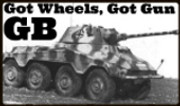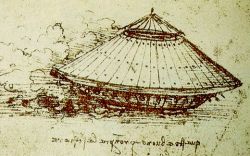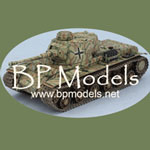Post by 4bogreen on Jan 11, 2016 4:24:07 GMT -5
Hi guys!
I was a bit mad, on myself. I have beautiful acrylics from Vallejo (my mainstay), Lifecolor and Panzeraces. I was always weathering with turp based paints and i actually wanted to replace these paint by acrylics. i was a bit scared to ruin my models (like my T-30 and T-34) by experimenting on them. Acrylics have for me a great bennefit of quick drying time, so i will make more progress in the same time. Also the anoying smell is not there. To begin "das experiment" i have to decided to build a new model, to work on. I would keep it simple with the 1/48 Airfix Spitfire MK.Vb kit. A very nice kit indeed. By studying the Spitfire, the Soviets got to use this type also in their airforce. Cool!
But like some other projects, thing got out of control very quickly and i ended up with a high-tech kit. Here is the list of things i got.
-Airfix Supermarine Spitfire MK.Vb.
-Eduard Brassin Spitfire MK.Vb cockpit
-Eduard Brassin Spitfire MK.Vb wheels
-Master in reality 20mm canon barrels
-masking tape for the cockpit hood and wingshield
Told you that things got out of control quickly. lol!!!!
The Soviets got to use 32 type MK.Vb as their first useage of the Spitfire. They recieved 35 Spitfire aircraft MK.Vb types, from january 1943 till march 1943. They were used in the huge battle over the Kuban area, in south Russia prior tho the Kursk battle.
Altough in the west regarded as the finest fighter arround and the winner of the battle for Brittain, the Soviets find this type a midiocre plane that looked and flew like a Messerschmitt. They preferred the P-39 airacobra aircraft, above the Spitfire. The aircraft recieved were used and had 20 or even 30 flighthours on them. Recieving no training from British Spitfire pilots, No spare parts and no Russian language instruction manuels, they were on their own to figure things out. Lots of mechanical breakdowns were explained due different conditions in the field. The spitfire was a ''clean'' aircraft, needed of regulair maintenance and needed concrete airfields to work from. Many of its breakdowns were the breaking of the landing gear locking pins (rough terrain), dents in the wooden propellers (Soviets used gravel on their airfields) and the breaking of the piston rodds in the Merlin engine. Rapports say that if the aircraft was seviced propperly, it would forfill its duty fine. Work of the service men on the ground, maintaining the Spitfire in these conditions, was outstanding.
Photo's will follow soon of the work till now...
Regards,
Remco
I was a bit mad, on myself. I have beautiful acrylics from Vallejo (my mainstay), Lifecolor and Panzeraces. I was always weathering with turp based paints and i actually wanted to replace these paint by acrylics. i was a bit scared to ruin my models (like my T-30 and T-34) by experimenting on them. Acrylics have for me a great bennefit of quick drying time, so i will make more progress in the same time. Also the anoying smell is not there. To begin "das experiment" i have to decided to build a new model, to work on. I would keep it simple with the 1/48 Airfix Spitfire MK.Vb kit. A very nice kit indeed. By studying the Spitfire, the Soviets got to use this type also in their airforce. Cool!
But like some other projects, thing got out of control very quickly and i ended up with a high-tech kit. Here is the list of things i got.
-Airfix Supermarine Spitfire MK.Vb.
-Eduard Brassin Spitfire MK.Vb cockpit
-Eduard Brassin Spitfire MK.Vb wheels
-Master in reality 20mm canon barrels
-masking tape for the cockpit hood and wingshield
Told you that things got out of control quickly. lol!!!!
The Soviets got to use 32 type MK.Vb as their first useage of the Spitfire. They recieved 35 Spitfire aircraft MK.Vb types, from january 1943 till march 1943. They were used in the huge battle over the Kuban area, in south Russia prior tho the Kursk battle.
Altough in the west regarded as the finest fighter arround and the winner of the battle for Brittain, the Soviets find this type a midiocre plane that looked and flew like a Messerschmitt. They preferred the P-39 airacobra aircraft, above the Spitfire. The aircraft recieved were used and had 20 or even 30 flighthours on them. Recieving no training from British Spitfire pilots, No spare parts and no Russian language instruction manuels, they were on their own to figure things out. Lots of mechanical breakdowns were explained due different conditions in the field. The spitfire was a ''clean'' aircraft, needed of regulair maintenance and needed concrete airfields to work from. Many of its breakdowns were the breaking of the landing gear locking pins (rough terrain), dents in the wooden propellers (Soviets used gravel on their airfields) and the breaking of the piston rodds in the Merlin engine. Rapports say that if the aircraft was seviced propperly, it would forfill its duty fine. Work of the service men on the ground, maintaining the Spitfire in these conditions, was outstanding.
Photo's will follow soon of the work till now...
Regards,
Remco





















































